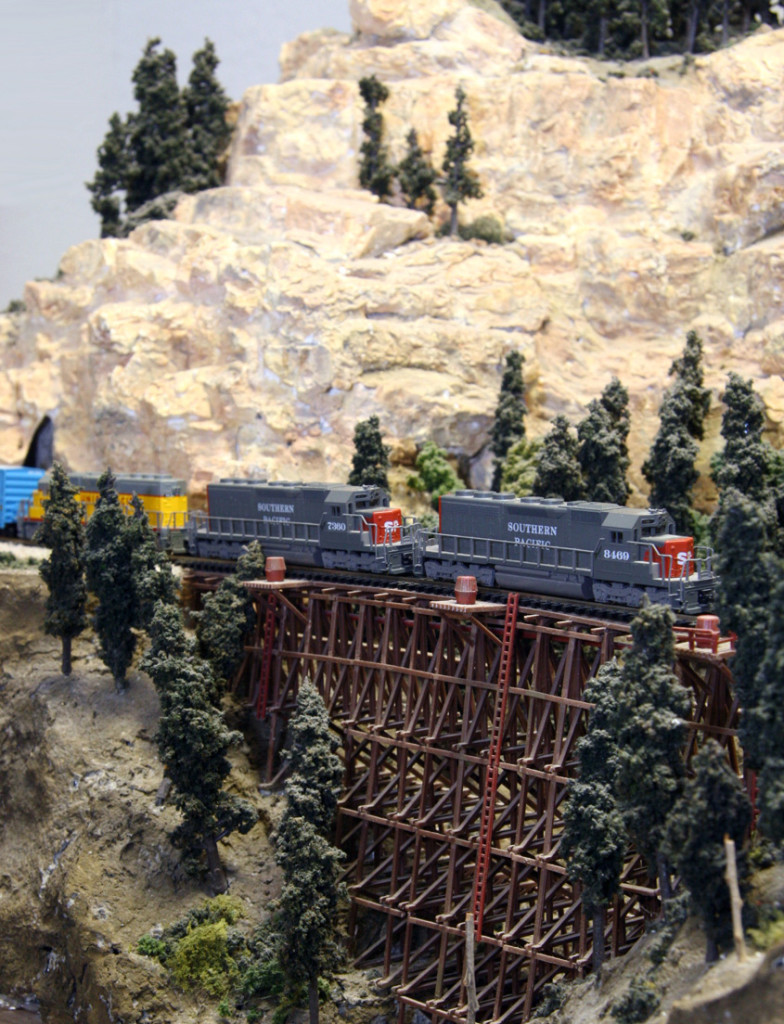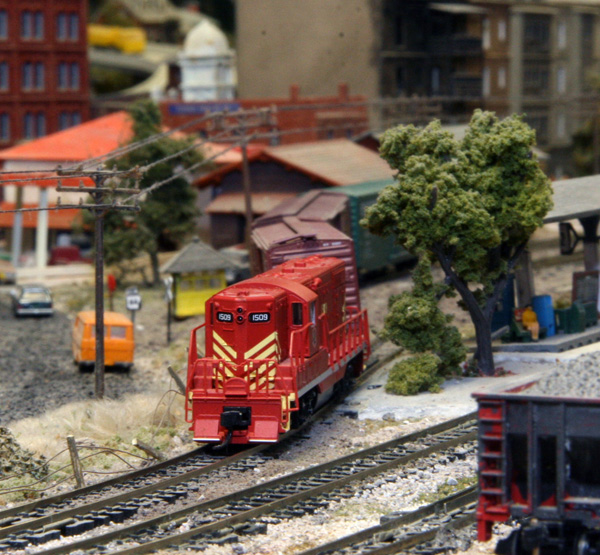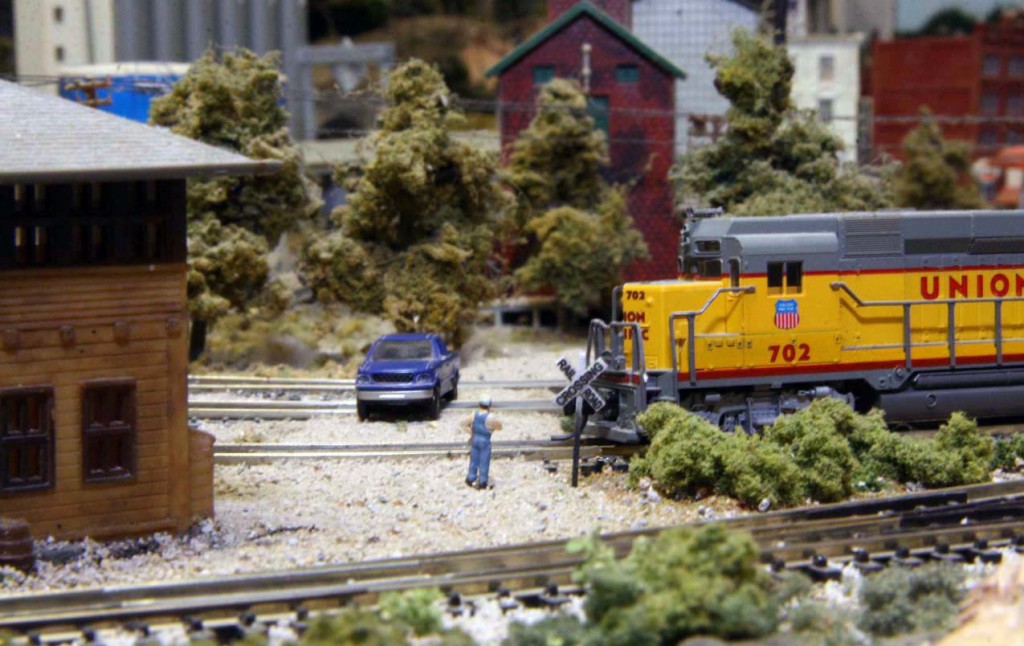All about the community of model railroading and rail enthusiasm
The Whitehurst & Pine Ridge Railroad was disassembled in 2017 but is being rebuilt, similar in scope, to a much larger size. Following is a description of the layout as it existed from 1995-2017.

Set in the hills of Northwest Arkansas in the mid-1980s during the Union Pacific merger era, the original N-scale Whitehurst & Pine Ridge Railroad had a long run after its humble beginnings in 1984.
During its 35 years, the W&PRR evolved into a locally recognized layout in Dallas/Fort Worth, enjoying periodic visitors on convention and train show home tours.
Like many model railroads, the W&PRR began on a sheet of plywood for mostly continuous running with some switching. In its lifetime, the railroad underwent two moves and multiple expansions, surviving a scary moment in its infancy when the original 4′ x 6′ section slid down Hwy. 121 a few feet after being blown out of the back of a pickup.
In 1993, the W&PRR arrived at its current location but was stored for two years until a 9′ x 16′ area off the garage could be converted into a train room.
The area offered more room to expand the W&PRR to a small, strategically located short line southeast of Fort Smith, offering plenty of opportunity from its Class I parent UP, as well as Kansas City Southern and Burlington Northern.
In the 2000s, the L-shaped layout had grown to three levels and was accessible from the back through a window overlooking the garage. Two loops provided continuous running of Class I trains; the W&PRR operated a branch line serving Pine Ridge and Whitehurst inside the loops and Elaine along the east and south walls of the room.
Behind the glass, two lower levels were added for staging in Little Rock and switching in Monroe. The lower decks, or Subway as it was called, was a favorite among operators who enjoyed the comfort of the garage in early spring and fall and close proximity to the refrigerator.
Trains were controlled by MRC walk-around throttles, then the latest DC portable technology as Digital Command Control gained traction.
A mix of second-generation locomotives from UP, Missouri Pacific, Missouri-Kansas-Texas and Western Pacific moved freight from interchanges in Pine Ridge, Whitehurst, Little Rock and Monroe. Locals ran between Pine Ridge and Elaine, hauling coal, paper, cement, grain, lumber, petroleum, plastics and other goods.
UP trains from Kansas City, Dallas and Fort Smith interchanged with the W&PRR at Pine Ridge. KCS, with service from Fort Smith to Texarkana, interchanged with UP and the W&PRR at Pine Ridge as well.
The Monroe Northern, W&PRR’s sister short line in Monroe, provided a big connection for the cement industry. Cars bound for Fort Smith, Kansas City and Pine Bluff were interchanged with UP and Burlington Northern in the Monroe Industrial District.


Operations were limited on the W&PRR because of its table-top design within a rectangular room. Visitors had little room moving about and viewing the scenery-intense layout, which had great depth of field given its wide platform.
To put it bluntly, the old layout had become outdated and cramped. The operations plan was forced, operators had no elbow room. Employing a crew of three was quite crowded.
While there was plenty to look at and many cars to move, the experience wasn’t comfortable.
Time off from model railroading is sometimes good for the soul. In the two-plus years that the W&PRR was laid up after operations ceased in 2017, there was plenty of time to reflect on the layout’s pitfalls and draw plans for a more efficient railroad.
In the July/August 2019 edition of the Cowcatcher, plans were unveiled for a new, spacious footprint and a purpose that would not only improve the operating experience but allow visitors more comfort for viewing.
To learn more about how the W&PRR’s new direction, click HERE.